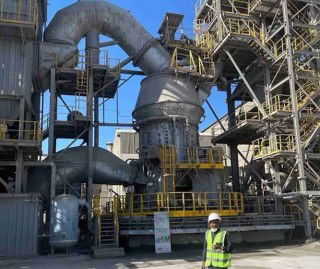According to newly-published University-led research, cement has been found to absorb carbon after it’s been poured, reports Copybook.
"It sounds counterintuitive, but it's true," adds University of California, Irvine (UCI), earth scientist Steven Davis. "The cement poured around the world since 1930 has taken up a substantial portion of the CO2 released when it was initially produced."
Gradually, then, infrastructure such as roads and buildings have been stripping the air of CO2 and storing it too, but to what extent? That’s what the UCI’s, University of East Anglia’s (UEA’s), California Institute of Technology’s and other institutions’ contributing scientists sought to find out as they explored cement’s CO2 storage capabilities. Details of their findings appear in a paper published by ‘Nature Geoscience’ in late November 2016.
The research undertaken by UCI’s Davis, the California technology institute’s Liu et al was exhaustive. They pulled together historic cement use data, measured concrete walls’ thicknesses, examined a range of concrete quality levels and looked at how long concrete buildings stood standing. They also toured numerous Chinese construction sites. This gave them a relatively in-depth look at factors affecting cement CO2 absorption levels. Such factors included size (how big was the largest piece of rubble…how small was the smallest?), outside exposure times and much more besides.
The scientists ultimately estimated that, from 1930 up to 2013, global cement production totalled 76bnt. Associated CO2 emissions reached over 38 gigatons, while cement carbon absorption ran to 4.5 gigatons – about 50 per cent of limestone conversion’s emissions output.
"Cement has gotten a lot of attention for its sizable contribution to global climate change, but this research reinforces that the leading culprit continues to be fossil fuel burning,” Davis stresses.
"We suggest that if carbon capture and storage technology were applied to cement process emissions, the produced cements might represent a source of negative CO2 emissions”, comments UEA professor Dabo Guan.
"Policymakers might also investigate ways to increase the completeness and rate of carbonation of cement waste, for example as a part of an enhanced weathering scheme, to further reduce the climate impacts of cement emissions."

Hima Cement emerges as leading contender to acquire Khayah Cement
Hima Cement , the East African producer owned by Uganda’s Sarrai Group, has emerged as the lead...